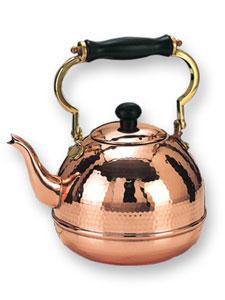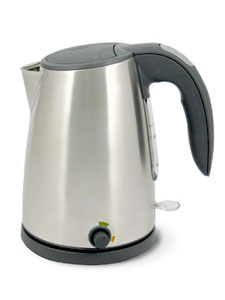An Introduction to Brewing Green Tea


When compiling my New Year's Resolutions this year, one shone through: drink more green tea.
It's something that I always try to do, not only for the seemingly eternal spring of health benefits that this tea is proving to provide, but also for the wide variety of flavor that can be experienced. Unfortunately, though, the exhausting "on the go" lifestyle that a tea guru leads is not efficacious to the amount of time and equipment that is needed to get green tea to steep correctly.
Throughout my tea life, I've heard a lot of strange stories about the ridiculous lengths that tea lovers have go through to make green tea. In this episode of TeaMuse, I will recount a few of the many usual methods for preparing the water for green tea.
During my formative years at Tea School, I was told to wait until the kettle's whistle just begins to rumble or, if it wasn't a whistler, when tiny bubbles begin to appear in the water. Through the years, I found that not only was this method inaccurate, but it also required a great deal of attention. Every time I wanted a cup, I'd have to hover over the stove, waiting for the tea (to appear) to reach the desired temperature.
As my education developed, I discovered yet another method for preparing water for green tea. It involved less effort, but was also much less precise: allow the water to boil, then let it cool enough not produce bitter tea. Simple enough—that is, if your have the innate ability to guess the temperature of water. The amount of time that the boiling water should cool seems to change depending on the source that gave you the advice. For example, one tea company I know recommends first boiling the water, then letting it sit for a minute. Another tea site advocates ten minutes. There a myriad of suggestions in between, each seemingly as erroneous as the next.
A variation of this method that has been suggested states that you should add cold water to the boiling water. Once again, the ratio of cold-boiling varies according to the advisor... Not to mention that this is the perfect way to crack your favorite teacup!
But the most outlandish hot water producing method for green tea that I've ever encountered comes from China. It involves boiling water, seven tea cups and fried rice. Pour the boiling water into the first cup, and let it rest. After a few seconds, transfer it into the second cup, let rest, then transfer again. Continue until you reach the seventh cup. With a stroke of luck, you'll have water appropriate for green tea. While this will result in nicely warmed teacups, it will also probably produce a puddle of spilt water and burnt hands. (The fried rice, of course, is for a snack- as you can tell, it's not the quickest and most efficient means of producing green tea water, so you may develop an appetite in the mean time.)
There are all kinds of miscellaneous gadgets that can be used to facilitate the measurement of the water to suit it for green tea leaves. For example, in some specialty stores, you may find a digital "green tea thermometer" that will beep when it reaches 180 degrees. However, the water temperature varies too greatly depending on the area of the cup which is measured-not to mention the fact that mine broke within a week of purchase. A higher-tech, laser-beam thermometer proved equally disadvantageous, in that it is unclear exactly what it was measuring (whether it was reading the temperature of the water or the mug).
Obviously, I wouldn't write an article about the problems with water preparation unless I had a noteworthy solution. Years in the making, the answer comes in the form of a variable temperature electric kettle, called utiliTEA. In the past, electric kettles sold by tea companies in the US only had the capability of producing boiling water. Not adapting to the growing popularity of green tea in the US, these tea companies created a chasm between tea trends and tea technology. Until recently, electric water kettles for steeping green tea were only available in Asia (were green is the most popular of teas). While these do produce an exceptionally accurate water temperature, they are always excessively overpriced and usually either boil water or heat it to 180 degrees-very few can do both. On the other hand, the utiliTEA kettle is versatile enough to heat to virtually all temperatures between 140 degrees and boiling-and it's very reasonably priced.
I received my utiliTEA from Adagio Teas as a Christmas gift—and have been using it ever since. That bitter taste in my mouth from all those other heating schemes and contraptions is gone forever. Making water for green tea has never been easier or more accurate. Spread the word.
Wishing all green tea lovers a happy, healthy and delicious 2005.
